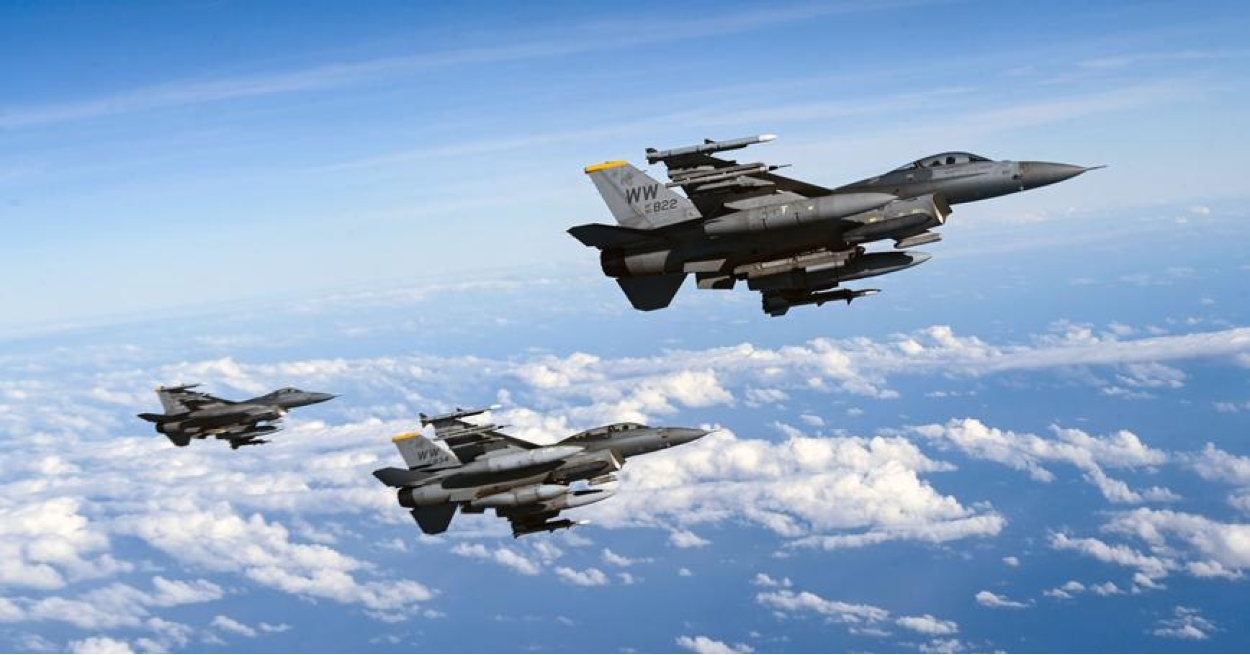Ukraine appears to be apprehensive of immediately using an extensive fleet of US-origin F-16 fighters, given Russia’s capability to target airfields across the country and keep a tab on military movements.
The same applies to Western-made air defense missiles, which, too, are vulnerable if they are brought in large numbers since Russia has information about all major Ukrainian ammunition and ordnance storage facilities.
This was stated by Ukrainian Air Force (UAF) spokesperson Yuri Ignat, according to reports in Russian media.
Russia operates a large air force that can undertake deadly missile strikes with jets like Su-30SM, Su-34, and Su-35 warplanes.
It employs large strategic bombers like the Tu-95, Tu-160, Tu-22, or the MiG-31K to hit targets deep into Ukraine from long ranges. The latter group of aircraft fire missiles, including the Kh-101 or the Kinzhal aero ballistic hypersonic missile.
It also uses land and sea-launched tactical missiles for ground strikes, including the Iskander ballistic missile, the Kalibr, Onyx cruise missiles, and the Geran-2 kamikaze drones for targeting Ukrainian air defense sites.
Ignat’s statement is also consistent with a previous EurAsian Times report about Russia threatening to bomb air bases in North Atlantic Treaty Organization (NATO) member countries surrounding Ukraine if the Western F-16s operate from there.
The admission, therefore, also validates the broad implication that Ukrainian-flown F-16s could find it challenging to operate from any airfield in the first place – Russian missiles cover the entire country.
‘Russia Can Hit Us Everywhere’
A report in TASS quoted Ignat’s interview with Focus magazine, where he reportedly said, “The Ukrainian military is apprehensive to import large quantities of American F-16 fighters, as well as air defense missiles, into the country.”
“This is due to the risk of their destruction by Russian forces, who are well aware of the storage locations of weapons.”
The “huge number” of missiles” from Western countries “need to be stored,” and Russia “sooner or later will find out about this.” Another UAF representative admitted that “intelligence is unfortunately working for them (the Russian military) and there is little point in placing full ammunition depots in Ukraine.”
“It’s the same story with the F-16 fighters. Everything seems to be ready, but we don’t take it, why?!” Ignat said that after arriving on Ukrainian territory, the F-16s “will become a good target.”
The unidentified UAF official added that Ukraine intends to receive the F-16 when “the conditions are prepared.” “The people who will pilot them, the people who will service them, the airfield infrastructure. When everything is ready, there will be a rational basis for placing the aircraft in Ukraine. In the meantime, they will be repaired and modernized there,” Ignat adds.
Ignat has admitted to Russian air superiority in the past. In July last year, he pointed to how the Su-35S fighter, Russia’s most advanced jet after the Su-57, is the “main aircraft that poses a threat that must be acknowledged.”
“The technologically powerful aircraft with superior weaponry (has missiles) that boast even larger ranges than the AIM-120 Advanced Medium-Range Air-to-Air Missile (AMRAAM). Its radar, aiming, and navigation system can fire at several targets at once,” Ignat added.

Russia Constrained Without A-50
Since last year, leading Western analysts have also assessed that the F-16s will not be a game-changer in Ukraine and will be easily vulnerable to advanced Russian surface-to-air missile (SAM) systems like the S-400 and Russian fighters, including the Su-35 and the Su-30SM.
A previous EurAsian Times report reported how the A-50 was also fused with the S-400 to shoot down Ukrainian jets, affecting the most extended possible range of the AD system.
Another EurAsian Times analysis noted the plane’s utility in shooting down the F-16 fighters that Ukraine would receive by marrying the A-50 and the S-400 systems’ ultra-long-range (400-km) 40N6 missile.
However, Russia already reportedly lost an A-50 near the Sea of Azov on January 14 and now possibly has very limited operational AWACS left for critical missions.
It would, therefore, have to depend more on its stand-off missile strikes on airfields and enhance its aerial surveillance using the Sirius reconnaissance-strike drones to detect any ground movements that appear to transport large fighter aircraft.
- The author can be reached at satamp@gmail.com
- Follow EurAsian Times on Google News




